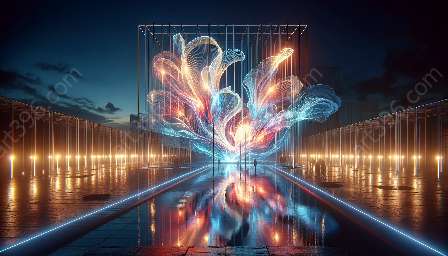Light art has emerged as a significant element in urban planning, creating vibrant and dynamic environments that blend art, technology, and architecture. This intersection of light art and urban planning has gained attention for its transformative impact on public spaces, buildings, and landscapes.
Understanding Light Art
Light art, also known as luminism or luminous art, utilizes light as the primary medium for artistic expression. Artists and designers use various light sources such as LED lights, lasers, projections, and natural light to create captivating installations, sculptures, and visual experiences.
Types of Light Art
There are several types of light art that contribute to the visual landscape of urban spaces:
- Light Installations: These large-scale installations often transform public areas, architectural facades, and landscapes with immersive and interactive light displays.
- Light Sculptures: Artists sculpt light into three-dimensional forms, captivating viewers with the interplay of light and shadows.
- Projection Mapping: This technique involves projecting light and visuals onto buildings and structures, creating visually stunning experiences that incorporate the architectural features of the space.
- Interactive Light Art: Utilizing sensors and technology, interactive light art installations respond to the presence and movements of viewers, creating dynamic and participatory experiences.
- Neon Art: Neon lights have long been a popular medium for creating vibrant and colorful signage, as well as artistic displays that contribute to the urban aesthetic.
Impact on Urban Planning
Light art holds the potential to significantly impact urban planning and design in various ways:
- Enhancing Public Spaces: By integrating light art installations, urban planners can revitalize public spaces, making them more inviting, engaging, and aesthetically appealing for residents and visitors.
- Architectural Emphasis: Light art can accentuate architectural features of buildings and landmarks, emphasizing their unique design elements and historical significance.
- Wayfinding and Navigation: Strategically placed light art can serve as wayfinding elements, guiding pedestrians through urban environments and creating distinctive landmarks for orientation and navigation.
- Cultural Expression: Light art contributes to the cultural vibrancy of cities, serving as a platform for artistic expression, storytelling, and community engagement.
- Urban Identity: Urban planners can utilize light art to establish and reinforce the identity of a city, district, or neighborhood, creating a distinctive visual identity that resonates with the local community.
The Future of Light Art in Urban Planning
As technology continues to advance, the future of light art in urban planning holds great promise. Innovations in sustainable lighting technologies, interactive experiences, and multidisciplinary collaborations will further shape the urban landscape, offering new possibilities for creative expression and community engagement.

